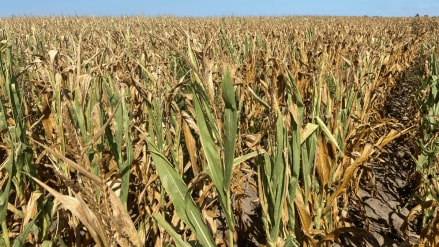Aiming to boost productivity and dealing with the challenges of climate change, the Union Budget has announced a series of measures including review of existing agri-research setup, releasing climate resilient varieties, setting up large-scale vegetable clusters and strengthening production, storage and marketing of pulses and oilseeds.
Commenting on the announcement relating to the overhauling of agricultural research, K C Ravi, chief sustainability officer, Syngenta India said, “this will strengthen India’s capacity to deliver solutions tailored to our diverse agro-climatic zones, benefiting a large number of farmers”.
The allocation for agriculture and farmers’ welfare at Rs 1.22 trillion for FY25, is up 5% from the revised estimate (RE) of FY24. The major chunk of the allocation is towards Pradhan Mantri Kisan Samman Nidhi (PM Kisan, Rs 60,000 crore), Modified Interest Subvention Scheme (Rs 22,660 crore), Prandhan Mantri Fasal Bima Yojana (Rs 14,600 crore) and Pradhan Mantri Annadata Aay Sanrakshan Yojana (PM Asha, Rs 6,437 crore).
The allocation for agricultural research has seen a marginal increase at Rs 9,941 crore.
To promote use of technology for assessment of crop yield ahead of the harvest, the government will initiate digital crop survey for kharif crops using digital public infrastructure in 400 districts. According to the finance minister, the details of 60 million farmers and their lands will be brought into the farmers and land registry.
As reported by FE earlier this month, the agriculture ministry has started work to build a digital registry in which more than 90 millions farmers will be provided with a unique ID which would be linked to the land records, Aadhar. Sources had stated that the move to create farmers’ digital registry is part of the government’s digital agriculture mission, which would enable them to access benefits from a host of schemes.
The Budget has also stated that the issuance of Jan Samarth (a public platform which connects beneficiaries with lenders) based Kisan credit cards will be enabled in five states.
To deal with the frequent spike in vegetable prices, which pushes up food inflation, the Budget has talked about development of large scale clusters for vegetable production closer to major consumption centres.
The finance minister reiterated the announcement made in the Interim Budget regarding the strategy which is being worked out to achieve ‘atmanirbharta’ for oil seeds such as mustard, groundnut, sesame, soybean, and sunflower. India currently imports around 58% and 15% of its annual requirement of edible oil and pulses respectively.
To boost shrimp farming and exports, the share of which comprised two thirds of the country’s seafood shipments of Rs 60,000 crore in FY24, the finance minister announced financial support through Nabard for setting up a network of nucleus breeding centres for shrimp broodstocks. Basic customs duty on certain broodstock, polychaete worms, shrimp and fish feed has been brought down to 5% from the earlier 10%.
“Mission for self-sufficiency in pulses, encouraging shrimp production and focus on vegetable production clusters will help in aligning production to emerging changes in consumption of fresh produce and proteins,” Anand Ramanathan, partner, Deloitte India, said.
